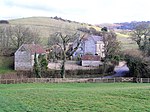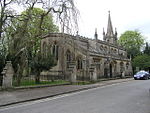Monkton Combe School

Monkton Combe School is a public school (English private boarding and day school), located in the village of Monkton Combe near Bath in Somerset, England. It is a member of the Rugby Group of independent boarding schools in the United Kingdom.The senior school in Monkton Combe village admits pupils aged from 13 to 18 (pupil numbers are around 500); the Preparatory School in Combe Down village admits children aged from 7 to 13; and the adjacent Pre-Preparatory has classes in nursery (ages 2–3), kindergarten (3–4), reception (4–5) and years 1 and 2 (5–7). The Senior School and Preparatory School have always admitted boarding pupils although day pupils now (2021) comprise one third of the Senior School and are in the majority in the Preparatory School. Since 1992 when it merged with Clarendon School for Girls the school has been fully co-educational although it first admitted girls in 1971. The Senior School operates three boys' boarding houses and three girls' boarding houses, all in the village of Monkton Combe.
Excerpt from the Wikipedia article Monkton Combe School (License: CC BY-SA 3.0, Authors, Images).Monkton Combe School
Waterhouse Lane,
Geographical coordinates (GPS) Address Website Nearby Places Show on map
Geographical coordinates (GPS)
| Latitude | Longitude |
|---|---|
| N 51.3569 ° | E -2.327 ° |
Address
Monkton Senior School
Waterhouse Lane
BA2 7HG
England, United Kingdom
Open on Google Maps









